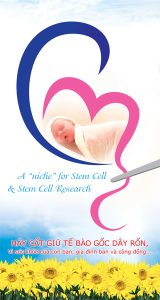Linked in, 07/04/2025
This article has previously been published in the blog section of the Crioestaminal website.
Umbilical cord blood (UCB) stem cells are known for their ease of use after cryopreservation, lower compatibility requirements between the donor and the patient (when compared to other similar sources, such as bone marrow), and their ability to reconstitute all blood cells, being used in the treatment of more than 90 diseases. However, there are some limitations to their clinical use, such as the time between their infusion and the clinical effect (haematopoietic reconstitution), which can cause complications for immunologically compromised patients. The first UCB stem cell treatment was carried out in 1988 on a patient with Fanconi anaemia. Since then, the number of pathologies that can be treated with umbilical cord-derived stem cells has increased, from haematological diseases such as leukaemia and lymphoma to other areas (still in an experimental context) such as autism and cerebral palsy. After more than 60,000 transplants, the medical and scientific communities are endeavouring to reduce the limitations of using UCB, and one of the most promising methodologies is the infusion of mesenchymal stem cells in parallel with UCB.
Mesenchymal stem cells (MSC) can be found in different adult tissues, such as bone marrow, adipose tissue or umbilical cord tissue. These cells are capable of differentiating into bone, adipose tissue and cartilage cells, among others. In addition, their clinical use is based on their ability to support and facilitate haematopoietic grafting, and their modulating effect on the immune system. A study published in the scientific journal Current Research in Translational Medicine aimed to test the safety and efficacy of using UCB and MSC together in order to improve the results of UCB transplants.
Joint infusion of UCB and MSC is safe and reduces grafting time
The study described is a phase I/II clinical trial aimed at determining the feasibility, safety and efficacy of UCB transplantation when co-infused with MSC from a donor, in patients with haematological diseases (mostly acute myeloid leukaemia). Safety was assessed by interpreting treatment-related mortality (TRM) 100 days after treatment. The rates of haematological recovery, immunological recovery, the occurrence (or not) of graft-versus-host disease, and the development of infections and/or relapses were also assessed. The 11 patients involved in this trial underwent chemotherapy and radiotherapy before the stem cell infusions. The MSCs, obtained from the bone marrow of unrelated donors, were administered to the patients one hour before the UCB infusion. Immunological and haematopoietic reconstitution was assessed through neutrophil and platelet counts a few days after the co-infusion of MSC and UCB.
A 100 days after treatment, the observed TRM in this study was more favourable when compared to previous studies. The grafting speed of the infused cells and the reconstitution of the immune system are determining factors for the survival of these patients, and the results presented in this study show that the average time until neutrophil and platelet recovery was 16 and 27 days (respectively), i.e. shorter than that usually reported after conventional UCB transplantation. The fact that no graft rejection was observed seems to indicate that the allogeneic co-transplantation of UCB and bone marrow MSC accelerates the engraftment of haematopoietic stem cells and may lead to a more favourable prognosis, with only one of the 11 patients developing graft-versus-host disease. Those responsible for the study suggest that co-transplantation of UCB and MSC is preferable to infusion of UCB alone.
Although this study included a small number of patients, the researchers argue that cord blood transplantation is still advantageous today, compared to the use of other options (haploidentical or unrelated bone marrow transplants), which have similar therapeutic results but are not as readily obtained and applied. The work thus suggests the added value of co-transplanting the two types of stem cells, haematopoietic and mesenchymal, which has enabled these patients to have a safe treatment and faster haematopoietic recovery. According to the authors, this study shows that the co-infusion of MSC and UCB can improve the results of UCB transplants.
References
Planken S, et al. Feasibility of co-transplantation of umbilical cord blood and third-party mesenchymal stromal cells after (non)myeloablative conditioning in patients with hematological malignancies. Curr Res Transl Med. 2024 Aug 17;72(4):103466. doi: 10.1016/j.retram.2024.103466.
Sources: Linked in
Link: https://www.linkedin.com/pulse/co-infusion-mesenchymal-stem-cells-umbilical-cord-blood-ribeiro-srqdf






